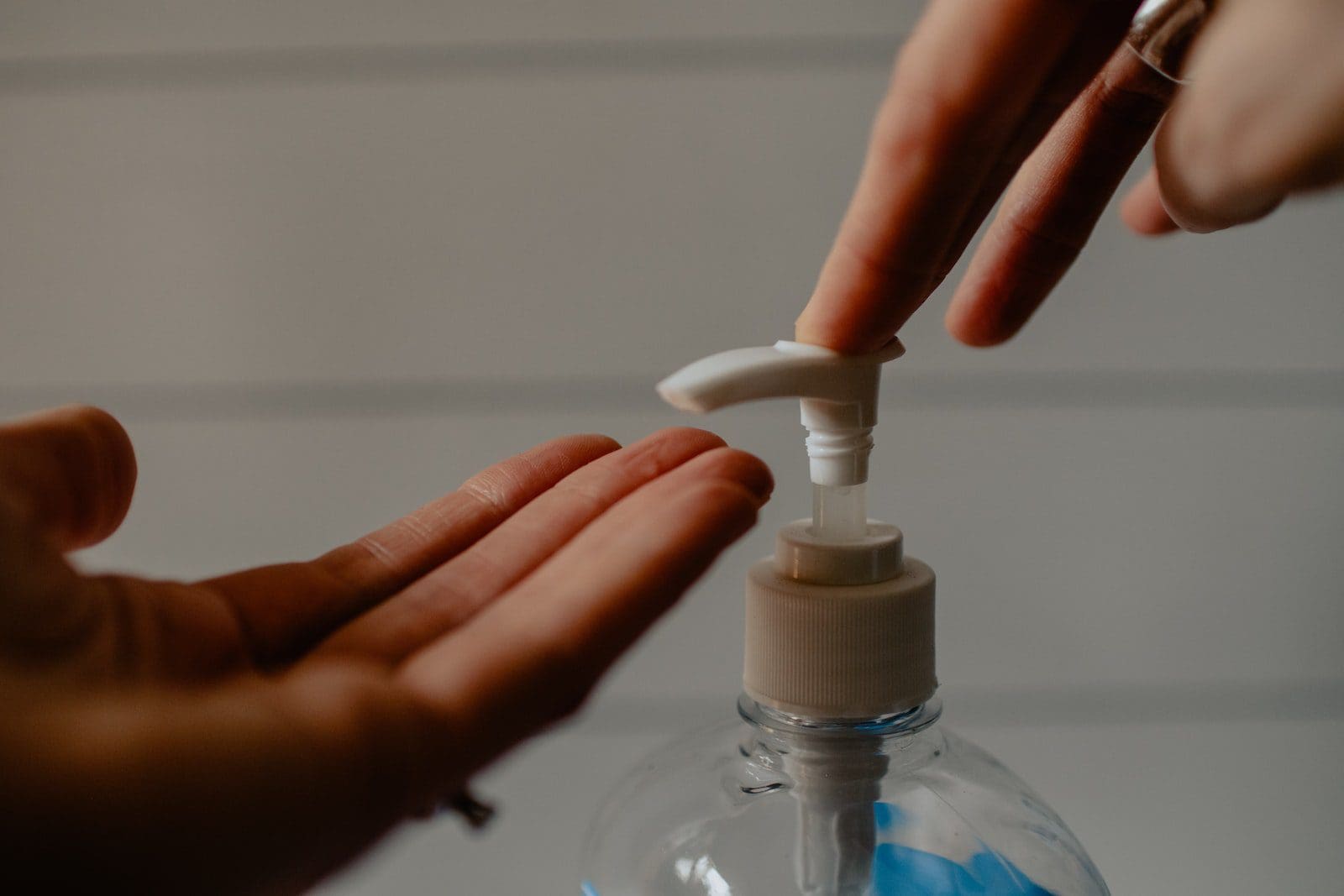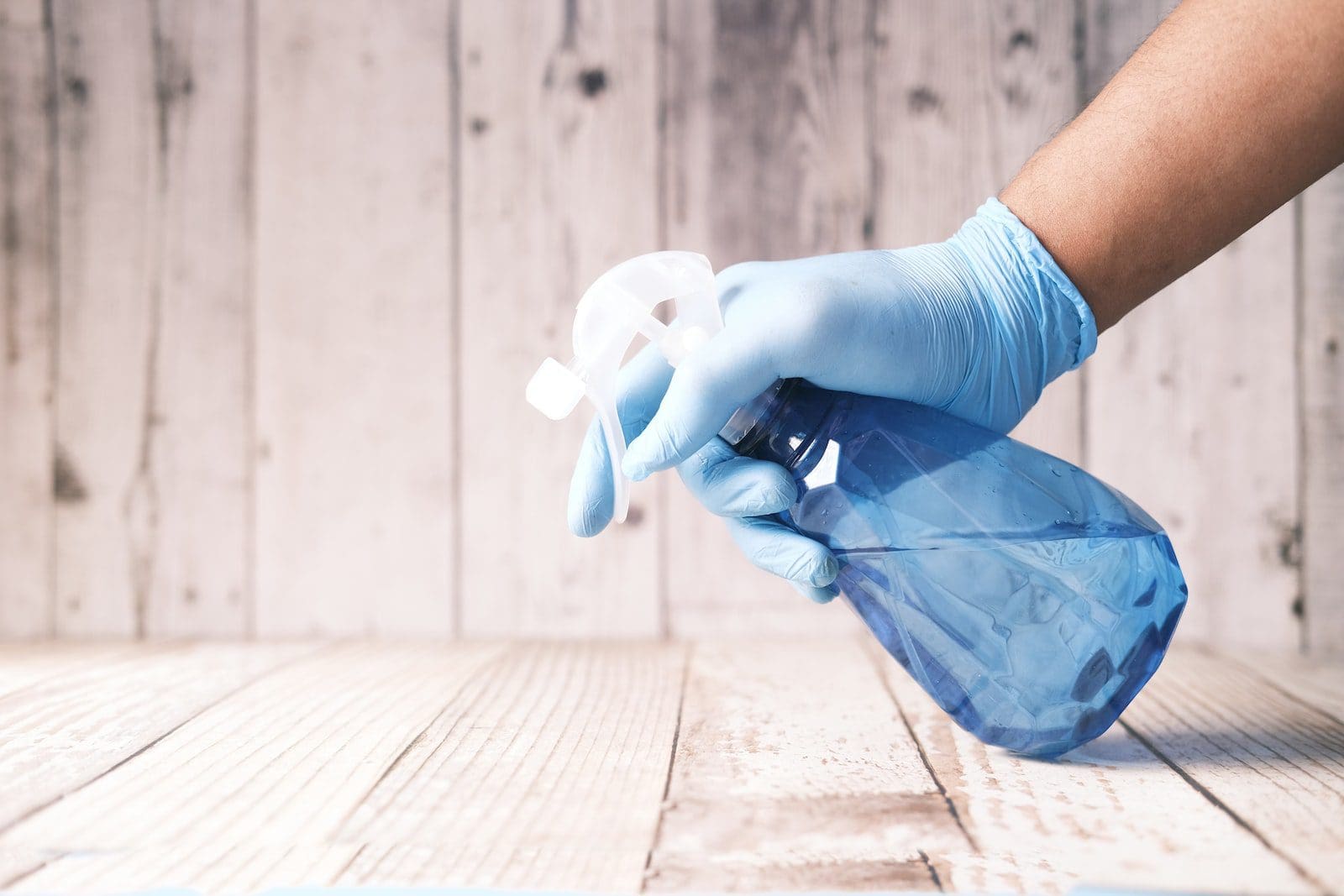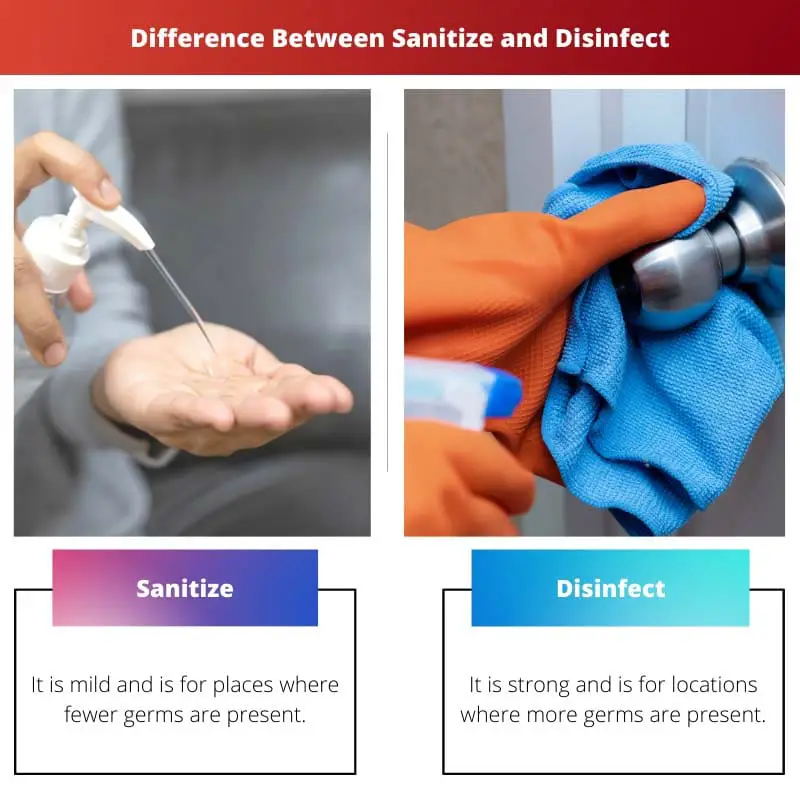Sanitization and disinfection methods have been used before by doctors in hospitals and places where people gather. At present, when diseases are quite easily affecting our system, the need for the conduction of ‘sanitizing’ and the process of ”disinfecting’ has increased.
The two words are similar in meaning, but the key difference lies in the intensity of substances used to conduct these procedures. Knowing the differences will also let people know when to sanitize and when to disinfect.
Key Takeaways
- Sanitizing reduces the number of germs on surfaces to safe levels, while disinfecting kills or inactivates most or all pathogens.
- Disinfectants are stronger and more effective than sanitizers but can also be more toxic to humans and the environment.
- Sanitizing is suitable for everyday cleaning while disinfecting is recommended for high-touch surfaces and during outbreaks of infectious diseases.
Sanitize vs Disinfect
The difference between these phrases is that the intensity of the components used for these two methods is different. Sanitization (usage of sanitisers) is a simple technique where the chemical substances utilized are less powerful. As contradicted by it, disinfecting is a more powerful technique and has a more potent composition. Furthermore, the chemical substances used vary along with the portion of germs.

Sanitization is a method executed in a spot where the germ count is considerably lower than disinfection. Sanitization will curtail the number of germs to such an extent that they will be too little in quantity. They would not be able to hurt us.
The sanitization technique involves the usage of less strong chemicals. They can kill a specific amount of germs in a limited period. Sanitisers are essential to sanitize the food packets we buy from outside, clothing, trinkets, etc.
Disinfecting a surface means using a harsh chemical as a disinfectant over a surface. This chemical can eliminate even the slightest trace of any germs present.
It kills every single one of them. It is the best choice for places where there are higher amounts of harmful germs or bacteria. There are three types (or levels). They are high level followed by moderate, and finally low. These levels help us know what disinfectant to use at what place.
Comparison Table
| Parameters of comparison | Sanitize | Disinfect |
|---|---|---|
| Strength | It is mild and is for places where fewer germs are present. | It is strong and is for locations where more germs are present. |
| Amount of germs killed | It kills most of the germs. | It kills all the germs up to 100%. |
| Places of use | Hands, toys, food packages, utensils should adopt the process of sanitizing. | Hospitals, rooms, floors, surgical instruments should adopt the process of disinfecting. |
| Chemicals involved | Mild chemicals find application in this procedure. | Strong chemicals find application in disinfectants. |
| What does it protect from | It protects us from certain types of bacterias. | It protects us from certain bacteria, viruses, mildews, or fungi. That comprises almost all germs. |
What is Sanitize?
Sanitize, or sanitization, in simplest terms, means the process of using sanitisers on a surface. Sanitisers can come in many forms. There are liquid sanitisers that come in bottles.
Also, a spray form of these is common. It is a method executed in a spot where the germ count is considerably lower in such a way that it’s not deadly.
Sanitization will kill most of the germs. It is efficient to such an extent that their presence lessens to about 0.01 percent. It is the technique where the destruction of germs takes place by the use of delicate chemicals.
They can kill a specific amount of germs in a limited period. They are helpful for the sanitization of food packets and other commodities we get from the market.
The best thing about sanitizers is that they are found easily in many stores. Also, these are compact enough to be carried around with us. Some of the constitutional components of these include ethanol, which makes up ninety-six percentage of the sanitizer.
Hydrogen peroxide constitutes the other three percent. Lastly, glycerol makes up the last one percent of these.
The World Health Organization has recommended people always use sanitizers. One should use it before and after eating. Also, when we take something from another person, it’s safe to sanitize it.

What is Disinfect?
Disinfect are for larger surfaces. It is conducted in places like hospitals for the safety of patients, in restaurants to prevent the spread of germs, in airports, on surgical apparatus, and where total sterilization is the demand.
Disinfecting a surface means the usage of harsh chemicals recognized as a disinfectant over a surface.
It is a strong chemical that is capable of eliminating even minute traces of germs. They are of three types categorized based on their efficiency. The higher-level ones are the safest and the most efficient.
Following it comes the moderate one. The last in these series is the low ones. Depending on the level of dirt and germs, one should make their choice.
The Environment Protection Agency has set up specific standards for disinfectants. They need to eliminate every germ. The disinfectant used in hospitals is the most powerful.
The chemical composition of these includes two percent glutaraldehyde along with seven percent phenol. In addition to this, 1.20 percentage of sodium phenate is also present.
Some famous disinfectants include alcohol, chlorine, and chlorine compounds. They are best along with Formaldehyde, Glutaraldehyde, Hydrogen Peroxide, etc. Hence, the use of disinfectants is a must.

Main Differences Between Sanitise and Disinfect
- In the case of sanitizers, it’s milder and is used commonly. But disinfectants are much strong and used in other places. Disinfecting is more efficient than sanitizing.
- Sanitation tries to kill a number of germs, and not all. But disinfection eliminates every trace of germs
- Sanitizers are used in hands, toys, utensils, and food packets. Disinfectants are used in hospitals and in places of gathering.
- Mild chemicals constitute sanitizers. However, more powerful and harsh chemicals make up disinfectants.
- Sanitizers provide us protection from the mainly bacterial spread. However, disinfectants help to destroy all kinds of germs. These include bacteria, fungi, viruses, and mildew.
